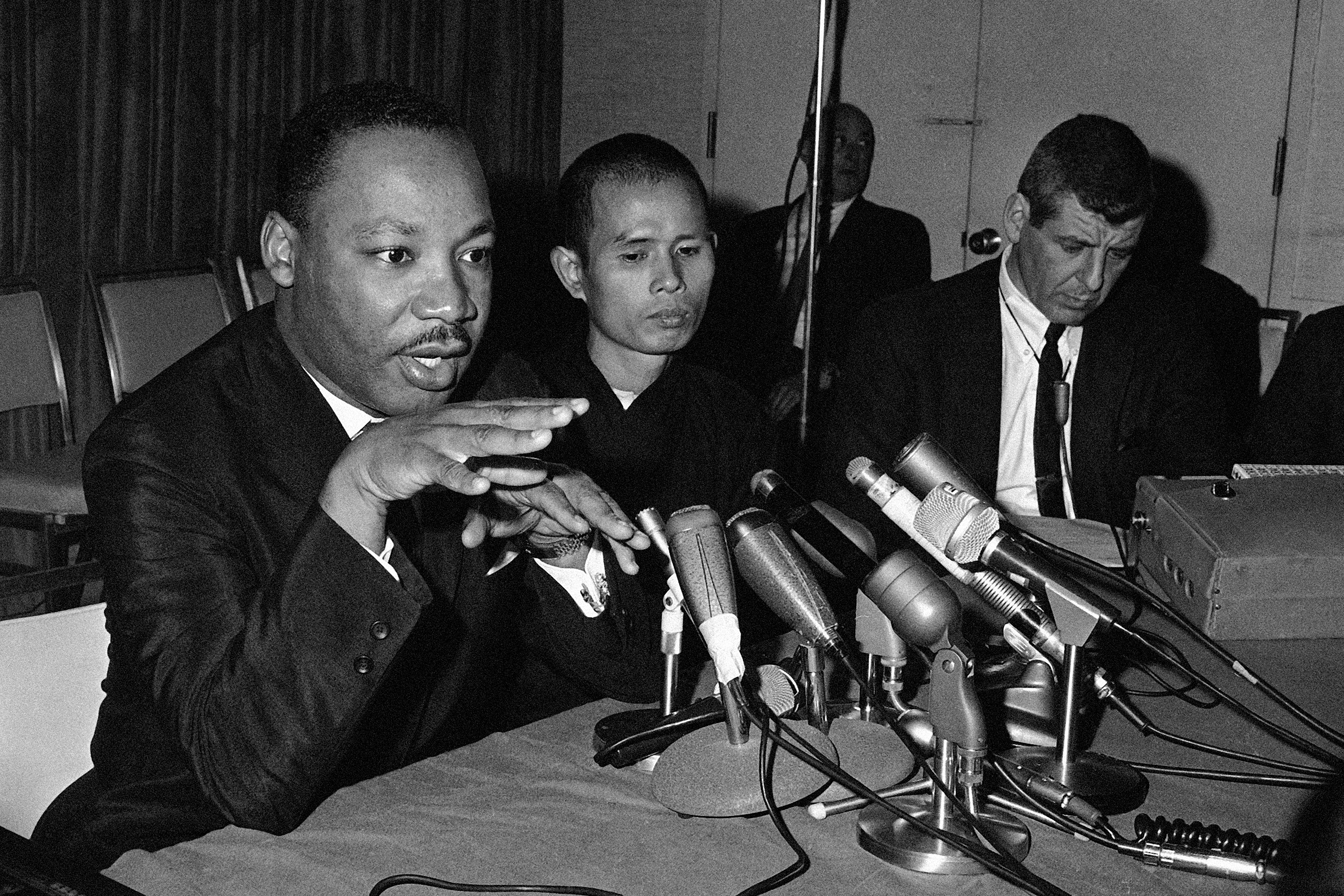Thich Nhat Hanh, the Monk Who Taught Mindfulness to the West, Has Died at 95
January 24, 2022If you practice meditation to achieve a daily sense of calm, or apply mindfulness to quiet your nerves before a perplexing task, you owe a lot to Thich Nhat Hanh, the Vietnamese monk whose teachings and activism popularized these Buddhist practices in the West and the world at large.
In his lifetime, Thich Nhat Hanh tried to end a war, addressed world leaders in global forums, wrote over 100 books, started mindfulness communities in many countries, and spent four decades in exile before he was allowed home to Vietnam to spend his final years at the monastery where he was ordained as a teenager.
He died “peacefully” at Tu Hieu Temple in Hue, Vietnam on Jan. 22, according to the International Plum Village Community of Engaged Buddhism, an organization he founded. He was 95.
Tributes to the “Father of Mindfulness” have poured in from all over. "I celebrate and honor Thich Nhat Hanh’s life and global influence for peace," Bernice King, Martin Luther King Jr’s daughter, said in a tweet. South Korean president Moon Jae-in said he was a “living Buddha.” The Dalai Lama said his “friend and spiritual brother… lived a truly meaningful life.”
“I have no doubt the best way we can pay tribute to him is to continue his work to promote peace in the world,” the Dalai Lama added.
Coming of age during the late 1950s during the Vietnam War, Thich Nhat Hanh became a key voice in Buddhism by choosing to maintain both a contemplative, meditative life and helping those suffering because of the fighting. Thus, he founded the Engaged Buddhism movement, a term he coined in one of his books, according to his official biography.
He sought and taught to apply meditation and mindfulness outside the monastery, so ordinary people could practice them to achieve peace and help with their daily lives. One of his well-known quotes states: “Meditation is not to escape from society but to come back to ourselves and see what is going on. Once there is seeing, there must be acting. With mindfulness, we know what to do and what not to do to help.”

In the 1960s, Thich Nhat Hanh travelled to the United States and Europe to teach in places like Princeton University and Columbia University, and called for an end to the war in Vietnam. In 1966, he met Martin Luther King Jr, who nominated him for the Nobel Peace Prize the next year. Neither the North nor the South Vietnam camps were pleased with his activism, resulting in Thich Nhat Hanh being exiled for 39 years.
In those years, he travelled the world extensively, spreading his teachings and lobbying Western leaders to end the Vietnam War. Starting in France in the 1970s, he founded communities and monasteries where hundreds of residents and thousands of visitors were taught “the art of mindful living.”
Through these and his books, Thich Nhat Hanh’s concepts caught on and drew a steady following in much of the Western world. By 2014, meditation and mindfulness have become part of mainstream culture, and which TIME called “the mindful revolution.”
In his later years, Thich Nhat Hanh gave mindfulness talks to the likes of Google, the World Bank, the Harvard School of Medicine, UNESCO, and the World Parliament of Religions.
He suffered a severe stroke in November 2014 shortly after his 88th birthday, and he had been unable to speak since. He then appealed to be allowed back into Vietnam and, in November 2018, he moved back into the Tu Hieu Temple, where he started out as a 16-year-old. There, he lived out the rest of his days in his wheelchair, living and meditating with the other monks.
Follow JC Gotinga on Twitter.
